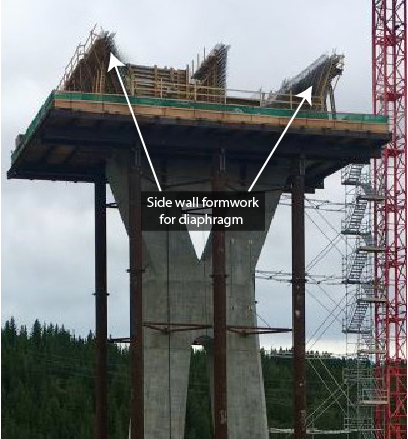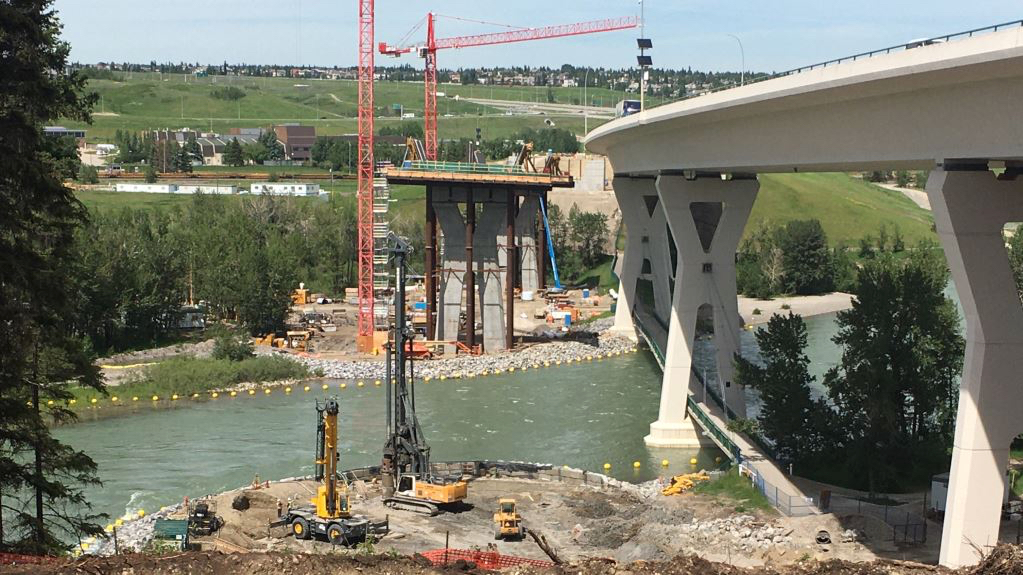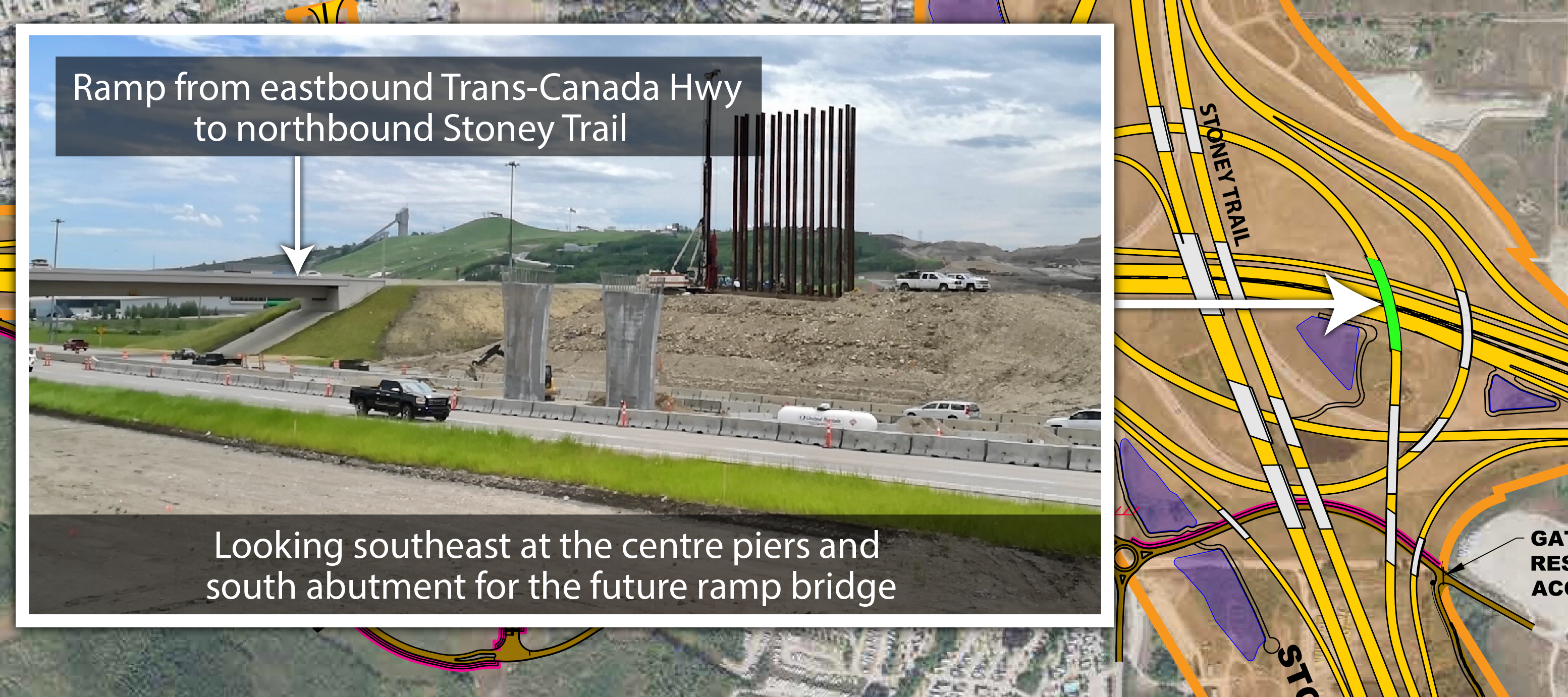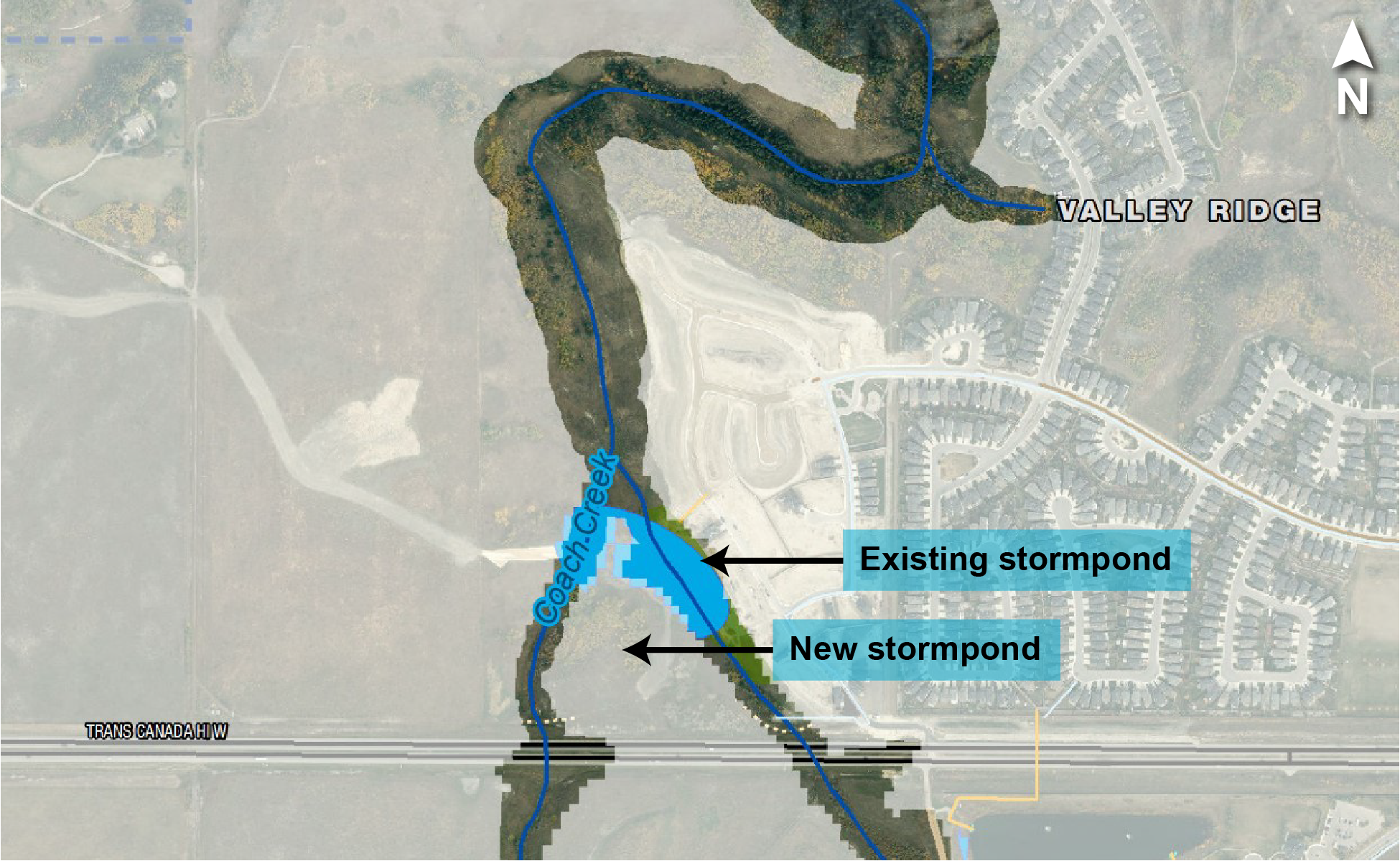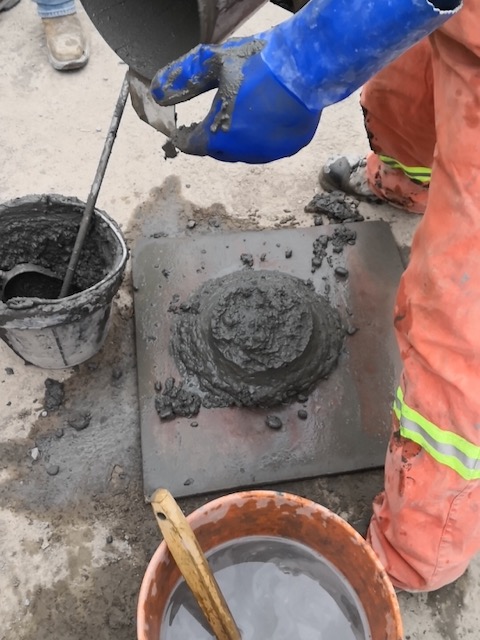Project Update – July 6, 2020
For up-to-date information on traffic detours and speed reductions, please visit 511 Alberta.
We appreciate your patience during construction.

Bridge Pier Construction
On the north side piers, the formwork for the segment walls and diaphragms are in place and crews are now placing rebar.
The diaphragms lock the girders in place and provide support for the bridge deck.
Stoney Trail Widening South of Scenic Acres Link N.W.
Granular Base Course (GBC) is placed immediately above the subgrade – native material underneath a road – and forms the foundation layer of the pavement structure. It provides drainage and protects the pavement structure from frost.
Stormwater Management

Exit from Eastbound Trans-Canada Highway to Northbound Stoney Trail Closed Overnight
The exit ramp from eastbound Trans-Canada Highway to northbound Stoney Trail will be closed overnight on Wednesday, July 8 (from 9 pm to 6 am) and Friday, July 10 (from 10 pm to 6 am) to accommodate girder installations over the ramp. Traffic will be detoured to Bowfort Road NW.
This work is weather dependent. Please visit 511 Alberta for up-to-date information on lane closures.
Trans-Canada Highway/Stoney Trail Interchange
Subdrains are perforated pipes that convey treated water to an adjacent drainage system. They are surrounded by gravel and may be wrapped in geotextile filter fabric.
Trans-Canada Highway/Valley Ridge Boulevard N.W. Interchange
Reinforced Soil Slopes (RSS) are compacted embankments that use geosynthetic material placed horizontally to reinforce and stabilize the slope. RSS are an economical alternative to conventional grade separations within limited right of way, because they use less material, reduce construction time and minimize right of way requirements.
The figure below shows the difference in land requirements for reinforced and unreinforced slopes.
Culvert Extensions Near Coach Creek
Some of the work west of Valley Ridge includes reconstructing about five kilometres of the Trans-Canada Highway (Highway 1) and a new stormwater management pond to handle runoff from the additional lanes on the upgraded highway and the major catchments southwest of the Valley Ridge Boulevard N.W. interchange.
This week crews will start extending culverts north of the highway to accommodate construction on the Trans-Canada Highway as well as connect to the new stormpond. The initial culverts will be temporary (corrugated steel) and replaced with permanent infrastructure later this summer.
Building the culvert extensions requires some work within the streambed of the Coach Creek tributary. Currently, runoff from this catchment discharges to Coach Creek uncontrolled and untreated. The new stormpond will improve water quality with the use of a forebay before it reaches the creek. All work being conducted is in accordance with AEP regulations and approvals.
The existing pond will not be impacted by this work and will remain operational, even after the new pond is constructed.

In a Slump
Slump tests are a way to measure the fluidity of concrete, which gives an indication of the water content, flowability (for concrete pumps), and how crews will have to finish the concrete surface once it has been poured (trowel, bow float, etc.).
The slump of concrete is determined by measuring the distance from the top of the slumped concrete to the level of the top of the slump cone.

